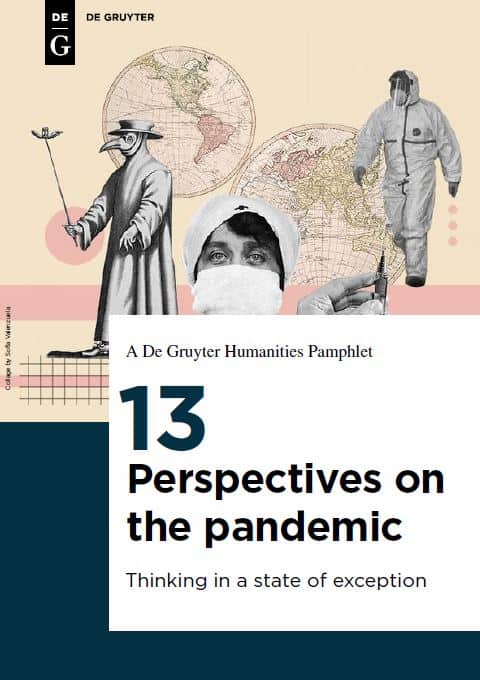Covid-19 and World War One Nursing
In October 1916, reflecting on nursing equipment shortages on the Romanian Front, British nurse Yvonne Fitzroy noted, “What we haven’t got we invent, and what we can’t invent, we do without”.
This essay was first published in the free digital pamphlet 13 Perspectives on
the Pandemic: Thinking in a state of exception.
This comment encapsulates twenty-first century responses to Covid-19. Medical services are re-thinking and rapidly adapting to meet the challenges posed by the pandemic.
When a Train is not Just a Train
Be they sick or wounded, patients often need to be moved quickly to hospital. During World War One, many battlefield casualties were evacuated by train. In August 1914, these were totally unsuitable. Even the most skilled nurses fought a losing battle against overcrowding, disease, and insanitary conditions. On August 31, 1914, nurse Kate Luard wrote of men piled into “cattle-trucks”, their wounds “full of straw and dirt.” By October, hospital trains boasted not only beds but also essential dressings and surgical equipment. The comment, “the railways will offer clean, sanitized and hygienic surroundings for patients to comfortably recover” could reflect that transformation. In fact, it’s a 2020 tweet from #IndiaFightsCorona. India is one of many countries adapting its trains in times of Covid-19.
Necessity as the Mother of Invention
Britain’s lack of Personal Protective Equipment (PPE) filled the headlines for weeks during the recent Covid-19 pandemic. Surprising stopgap measures were sought with prisoners as well as high-end fashion houses “making scrubs” [protective clothing] for NHS staff. Such shortages are nothing new. Kate Luard was grateful for the protective “mackintosh apron” a friend sent to her for personal use as contagious diseases were rife amongst casualties; nurses and medical staff were dangerously exposed. Other nurses begged those at home to send them the abrasive cleaner VIM so they could do their own deep cleaning. As in 2020, staff as well as patients succumbed to infections that PPE may have prevented.
The airwaves have been awash with frontline staff’s lack of face masks. Ingenious solutions range from converting scuba diving gear to masks made at home on 3D printers. Nurses also used what they had to hand. In late April 1915, soldiers began stumbling back from the line, gasping for breath. Soon overwhelmed themselves by clouds of chlorine gas, nurses rummaged through their kit bags for potential face coverings and unearthed… Mr. Southall’s Sanitary Towels for Ladies. Wrapped over nose and mouth, these did the job quite well — although this makeshift remedy did not reach the military authorities’ ears! Gas masks were eventually available; hopefully face masks will reach Covid-19 workers.
Rapid Responders
Worries about human “resourcing challenges” preoccupy those staffing Covid-19 hospitals, as was the case with the Western Front’s Casualty Clearing Station hospitals (CCS). One CCS might unexpectedly find itself in a quiet sector, another could suddenly be in a hotspot. But no-one knew when either might occur. The solution? Rapid Response Teams comprising an ambulance driver, surgeon, anesthetist, sister, orderly and officers’ batman were devised. Teams spent between one and two days working flat out at one CCS before responding to the next emergency call.
Nursing “in a sea of blood,” Beatrice Hopkinson felt, “I was right on the battlefield. Never will I forget the sight that met our eyes.” Army medical services now use helicopters, but the underlying premise of teamwork and rapid response is identical.
“Thank God We Have the Nurses”
Throughout the pandemic, every Thursday the UK public claps “for carers”. Between 1914 and 1918, some 25,000 women from Great Britain and her Dominions nursed those occupying the 637,746 hospital beds at home, on hospital ships and overseas. About 2,000 died due to their war service. Their inner strength and resilience enabled them to work in hitherto unforeseeable conditions; they took their professional skills and their ingenuity for adaptation to new unimagined heights, thereby saving thousands of lives.
They would undoubtedly salute the Covid-19 medical staff who are creating facilities in unlikely places, equipment out of improbable materials and doing battle not against war wounds but against the world’s worst pandemic for a century. The words spoken in 1915 to a naval nurse Anna Cameron remain true: “Thank God we have the nurses”.
Learn more in this related title from De Gruyter
[Title image via Pinterest]
